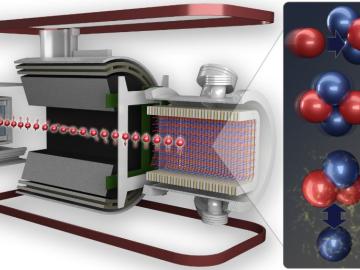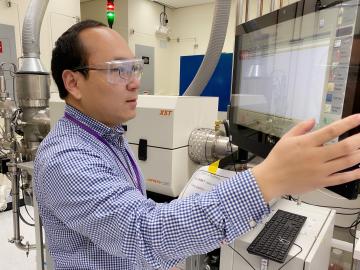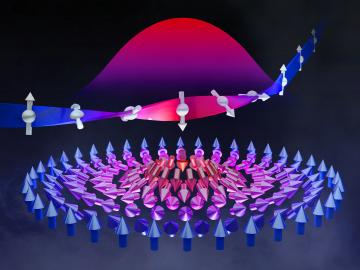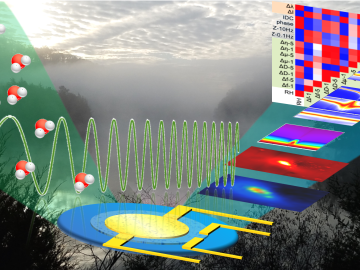
Filter News
Area of Research
- (-) Biology and Soft Matter (1)
- (-) Computational Engineering (1)
- (-) Materials (119)
- (-) National Security (9)
- (-) Nuclear Science and Technology (12)
- Advanced Manufacturing (6)
- Biology and Environment (46)
- Computational Biology (1)
- Computer Science (4)
- Electricity and Smart Grid (1)
- Energy Science (62)
- Functional Materials for Energy (1)
- Fusion and Fission (5)
- Fusion Energy (2)
- Isotope Development and Production (1)
- Isotopes (26)
- Materials Characterization (1)
- Materials for Computing (20)
- Materials Under Extremes (1)
- Mathematics (1)
- Neutron Science (125)
- Quantum information Science (9)
- Supercomputing (62)
- Transportation Systems (1)
News Topics
- (-) Isotopes (16)
- (-) Materials Science (79)
- (-) Neutron Science (40)
- (-) Polymers (17)
- (-) Quantum Science (12)
- 3-D Printing/Advanced Manufacturing (28)
- Advanced Reactors (15)
- Artificial Intelligence (22)
- Big Data (8)
- Bioenergy (15)
- Biology (8)
- Biomedical (10)
- Biotechnology (1)
- Buildings (6)
- Chemical Sciences (33)
- Clean Water (4)
- Composites (9)
- Computer Science (38)
- Coronavirus (7)
- Critical Materials (13)
- Cybersecurity (21)
- Energy Storage (35)
- Environment (23)
- Exascale Computing (2)
- Frontier (3)
- Fusion (16)
- Grid (11)
- High-Performance Computing (9)
- Irradiation (1)
- ITER (1)
- Machine Learning (17)
- Materials (74)
- Mathematics (2)
- Microscopy (27)
- Molten Salt (7)
- Nanotechnology (39)
- National Security (35)
- Nuclear Energy (53)
- Partnerships (15)
- Physics (30)
- Quantum Computing (3)
- Security (11)
- Simulation (2)
- Space Exploration (7)
- Summit (5)
- Transportation (16)
Media Contacts

Geoffrey L. Greene, a professor at the University of Tennessee, Knoxville, who holds a joint appointment with ORNL, will be awarded the 2021 Tom Bonner Prize for Nuclear Physics from the American Physical Society.

Led by ORNL and the University of Tennessee, Knoxville, a study of a solar-energy material with a bright future revealed a way to slow phonons, the waves that transport heat.

Through a one-of-a-kind experiment at ORNL, nuclear physicists have precisely measured the weak interaction between protons and neutrons. The result quantifies the weak force theory as predicted by the Standard Model of Particle Physics.

About 60 years ago, scientists discovered that a certain rare earth metal-hydrogen mixture, yttrium, could be the ideal moderator to go inside small, gas-cooled nuclear reactors.

Radioactive isotopes power some of NASA’s best-known spacecraft. But predicting how radiation emitted from these isotopes might affect nearby materials is tricky

Researchers at ORNL used quantum optics to advance state-of-the-art microscopy and illuminate a path to detecting material properties with greater sensitivity than is possible with traditional tools.

Oak Ridge National Laboratory scientists have discovered a cost-effective way to significantly improve the mechanical performance of common polymer nanocomposite materials.

Scientists discovered a strategy for layering dissimilar crystals with atomic precision to control the size of resulting magnetic quasi-particles called skyrmions.

A team led by Oak Ridge National Laboratory developed a novel, integrated approach to track energy-transporting ions within an ultra-thin material, which could unlock its energy storage potential leading toward faster charging, longer-lasting devices.

An all-in-one experimental platform developed at Oak Ridge National Laboratory’s Center for Nanophase Materials Sciences accelerates research on promising materials for future technologies.


